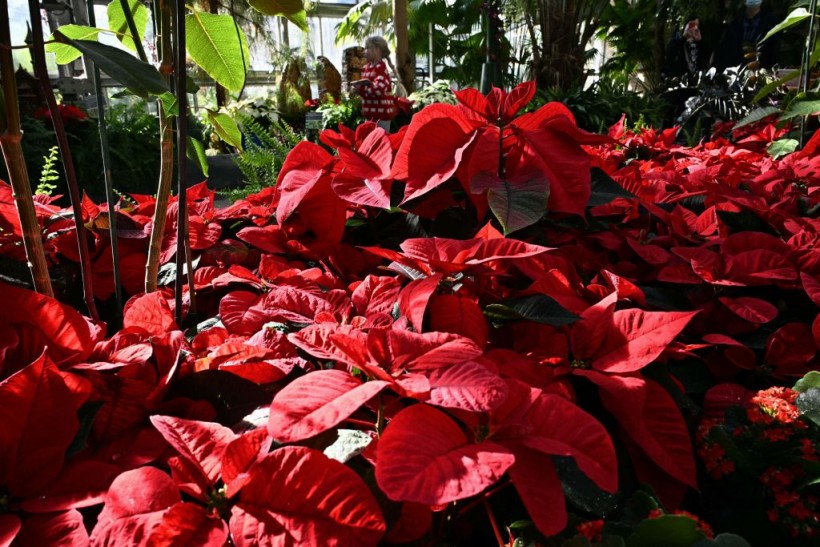Plants have a remarkable ability to sense and respond to light, which is essential for their survival and growth.
One of the most common and visible responses is phototropism, or the bending of plant organs towards the light source. But how do plants perceive the direction of light and adjust their growth accordingly?
A new study by researchers from the école Polytechnique Fédérale de Lausanne (EPFL) in Switzerland has revealed a surprising mechanism that involves inter-cellular air channels in the plant stem.
Air channels enhance light scattering in the stem
 (Photo : MANDEL NGAN/AFP via Getty Images)
(Photo : MANDEL NGAN/AFP via Getty Images)

The researchers used Arabidopsis thaliana, a small flowering plant that is widely used as a model organism in plant biology, to investigate the role of air channels in phototropism.
Air channels are microscopic spaces between cells that allow gas exchange and water transport in plants.
The researchers found that these channels also have another function: they enhance light scattering (refraction and reflection) in the stem, creating a light gradient across the organ that triggers phototropism.
To test this hypothesis, the researchers used a mutant plant that lacked air channels in the stem and compared its phototropic response to that of the wild-type plant.
They found that the mutant plant had a significantly reduced phototropic response, indicating that air channels are required for efficient bending towards the light.
They also used a computer model to simulate how light travels through the stem and confirmed that air channels increase the light gradient across the organ.
An ABC transporter regulates air channel formation
The researchers also identified a gene that is involved in the formation of air channels in the stem. The gene encodes an ABC transporter, a type of protein that transports molecules across cell membranes.
The researchers showed that this transporter is expressed in the embryo and is required to keep air in the inter-cellular spaces in the seedling.
They also found that the transporter affects the cell wall properties, making it more rigid and less permeable to water, which helps to maintain the air channels.
The researchers named the gene Air Channels Required For Phototropism (ARP), and proposed that it is a key regulator of air channel formation and function in the stem.
They also suggested that ARP may have a broader role in plant development and stress responses, as air channels are also involved in other processes such as oxygen diffusion, water transport, and mechanical stability.
Also Read: Plants Can Change Their Root Direction and Grow Away From Saline Areas To Avoid Soil Salts
A novel insight into plant light perception and growth
The study by the EPFL researchers provides a novel insight into how plants perceive and respond to light, one of the most important environmental factors for their survival and growth.
The researchers revealed that inter-cellular air channels in the stem create a directional light signal that regulates phototropism and that an ABC transporter is required for air channel formation and function.
The study also opens up new avenues for further research on the role of air channels in other aspects of plant biology, such as development, stress responses, and photosynthesis.
Related article: Nyctinastic Plants: Insect Bite Marks Shows the Evolution of Plants' 'Sleeping Movements'
© 2024 NatureWorldNews.com All rights reserved. Do not reproduce without permission.
![Tsunami Hazard Zones: New US Map Shows Places at Risk of Flooding and Tsunamis Amid Rising Sea Levels [NOAA]](https://1471793142.rsc.cdn77.org/data/thumbs/full/70325/280/157/50/40/tsunami-hazard-zones-new-us-map-shows-places-at-risk-of-flooding-and-tsunamis-amid-rising-sea-levels-noaa.jpg)




